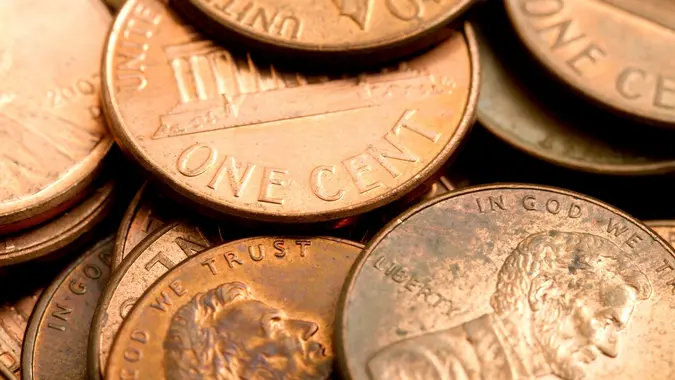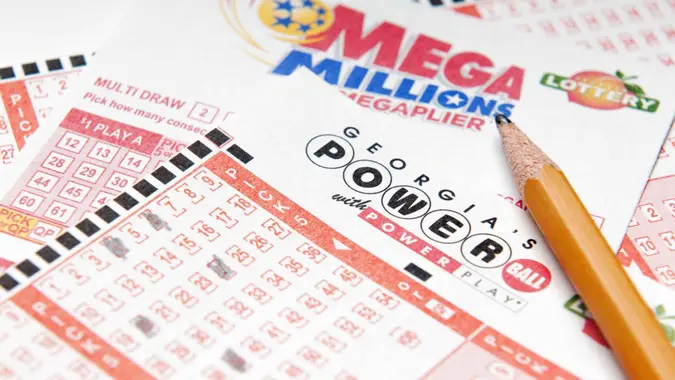I’m a Rare Coin Collector: How To Spot Valuable Coins

Commitment to Our Readers
GOBankingRates' editorial team is committed to bringing you unbiased reviews and information. We use data-driven methodologies to evaluate financial products and services - our reviews and ratings are not influenced by advertisers. You can read more about our editorial guidelines and our products and services review methodology.

20 Years
Helping You Live Richer

Reviewed
by Experts

Trusted by
Millions of Readers
Harrison Alley is a fiction writer, fantasy and sci-fi aficionado, founder of Fiction Lit, and an avid collector of rare coins. His passion for numismatics rivals his love of literature, and he calls the ability to spot a winner “a topic close to every collector’s heart.”
Over the years, he’s learned to recognize the few diamonds in the endless ocean of rough, common coins. Here’s what he looks for when scouting for rare and valuable specimens. Keep your eyes peeled — you might just have some circulating in your own home.
Rarity Rules: Low Mintage Makes for High Prices
The law of supply and demand applies to coin collecting just the same as everything else. The fewer there are, the more they’re worth.
“Generally, coins with limited production numbers tend to be more valuable,” said Alley. “Keep an eye out for those with lower mintage figures.”
One example is Morgan silver dollars minted from 1893 to 1895. According to GovMint.com, Morgans are among the most popular and accessible American coins, but the government restricted silver purchases in 1893, limiting the quantity of silver the U.S. Mint had to press new coins. The result was very low production runs back then and very valuable collector’s items today.
Thanks to the Panic of 1893, the 1893-S (indicating it was minted in San Francisco, which you’ll learn about shortly) is the rarest of all the Morgan silver dollars. Coinworld writes that only 10,000 exist of the 100,000 originally minted, and most are in circulated condition.
Because of that, NGC Coin Grading calls it “the undisputed king of the entire series,” fetching up to $90,000 in circulated condition and $1.25 million in uncirculated condition.
Condition and Grade — Higher Is Always Better
Condition joins rarity as the two most important determinants of the value of most coins. “Coin condition is key,” said Alley. “Coins graded by reputable agencies like NGC or PCGS fetch higher values.”
Alley refers to the respected and trusted Numismatic Guaranty Company and Professional Coin Grading Service.
“The higher the grade, the higher the demand,” he said.
According to the American Numismatic Association, coins are graded on a scale from 1 to 70, with 1 being “poor” and 60-70 earning the coveted “mint state” (MS) grading, often misstated as “mint condition.”
Unique Dates and Mintmarks Make Ordinary Coins Extraordinary
Mintmarks are letters that identify where a coin was made, and dates indicate the year of production.
“Certain combinations of date and mintmarks can be rarer due to historical events, limited runs, or unique circumstances,” said Alley.
They’re important clues that even novices can learn to spot. According to Heritage Auctions, “U.S. coins are avidly collected by date and mintmark, and the presence or absence of a mintmark can mean huge differences in the value of a coin.”
The famed auction house uses the example of the 1927 Double Eagle. Those bearing the date and mintmark “1927-S” — minted in San Francisco — are rare coins that command $5,000 even in poor condition. But the much more desirable “1927-D” — minted in Denver — “is a tremendous rarity, bringing six-figure prices whenever it is offered,” the auction house wrote.
Nobody Likes Mistakes — Except for Coin Collectors
Alley said that he looks closely for any minting mistakes when assessing a coin’s value.
“Coins with errors during the minting process, like double strikes or off-center minting, can be especially sought after,” he said.
According to Gainesville Coins, the most common minting errors include:
- Planchet errors: Planchets are the blank disks used to make coins, and they’re occasionally the wrong shape or thickness. Sometimes, planchets are even mistakenly left blank.
- Die errors: Mints use dies to stamp images, numbers and letters onto the obverse (heads side) and reverse (tails side) of planchets. A die flaw on either side can lead to an error like doubling or mismatching (called a mule coin), which can dramatically increase the coin’s rarity and value.
- Strike errors: A coin is struck when the die impacts the planchet. Any strike that is misaligned or off-center can make an otherwise common coin rare and valuable.
Important Historical Events Breed Important Historical Coins
Finally, coins produced during landmark global events can be especially valuable.
“Coins associated with significant historical events or periods often carry a higher value,” said Alley. “Examples include wartime issues or coins with distinct historical designs.”
For example, so-called war nickels were produced between 1942 and 1945. According to Bullion Sharks, nickel was an important war material and was strictly rationed during World War II.
“Therefore, all five-cent coins struck between 1942 and 1945 contain silver, copper, and manganese rather than nickel,” the publication wrote.
Nickel-less nickels are hardly the only winners.
For example, according to the Royal Mint, British Edward VIII coins are valuable because the “coinage of Edward VIII was only ever made as trial pieces as he abdicated before his coinage had the chance to be mass produced.”
 Written by
Written by  Edited by
Edited by 

























